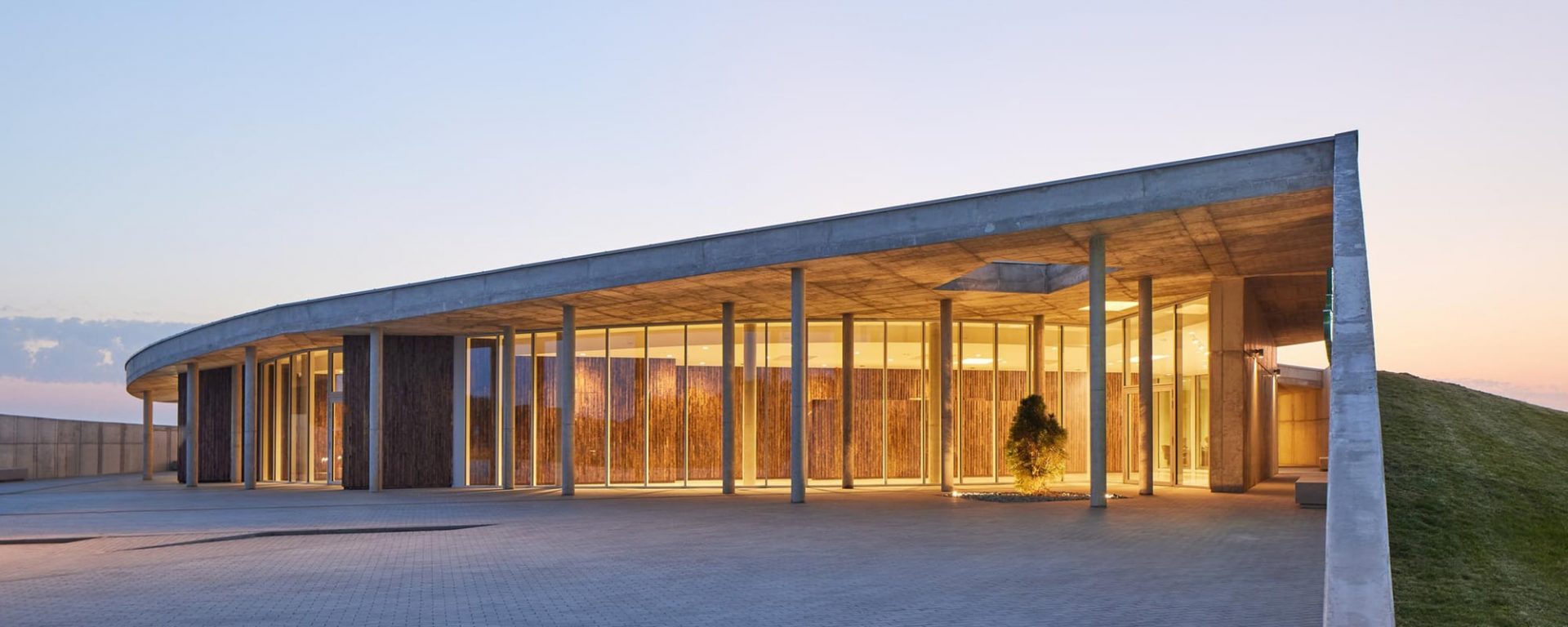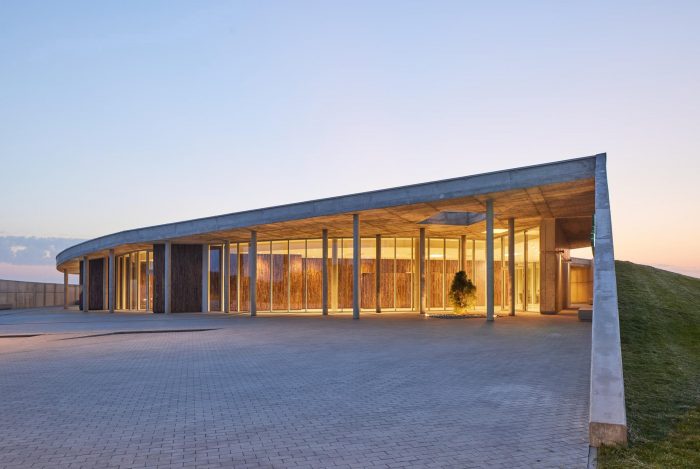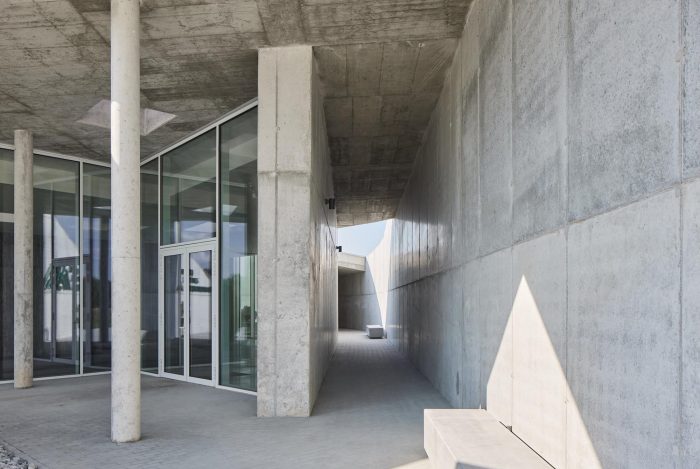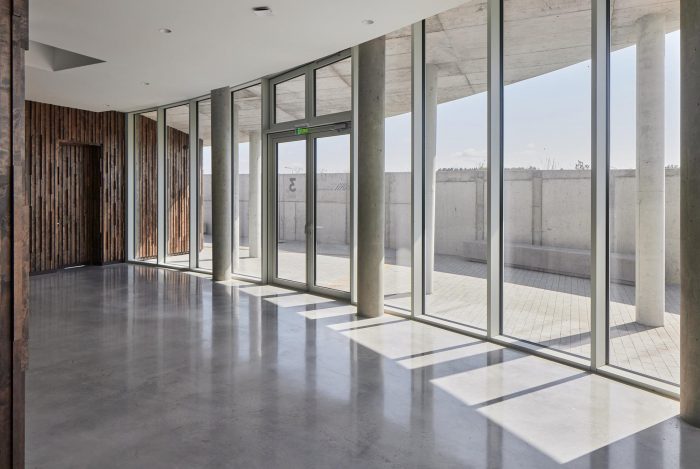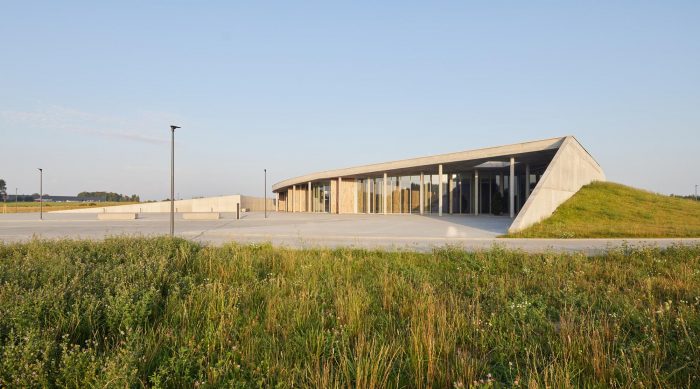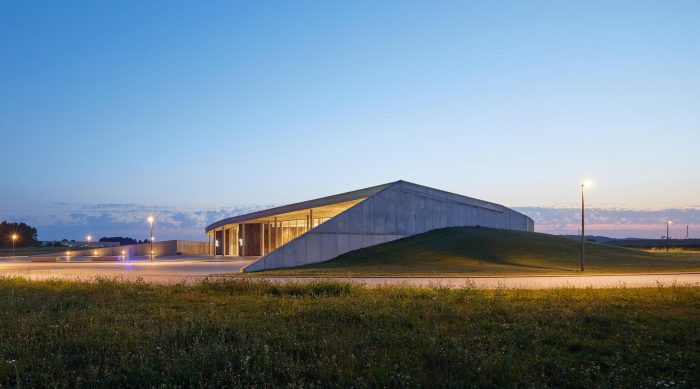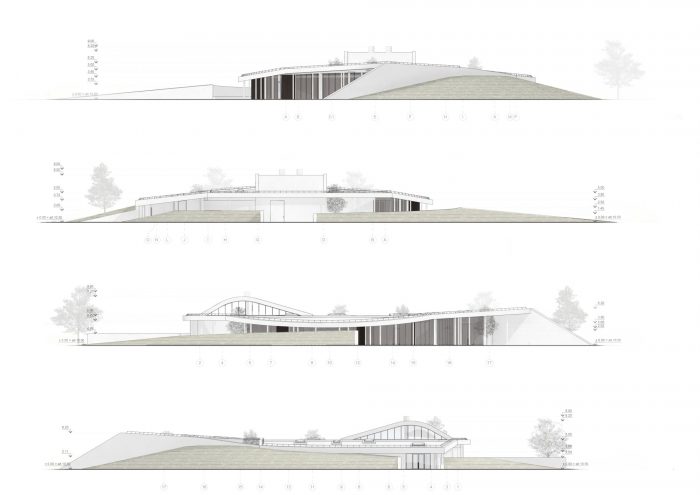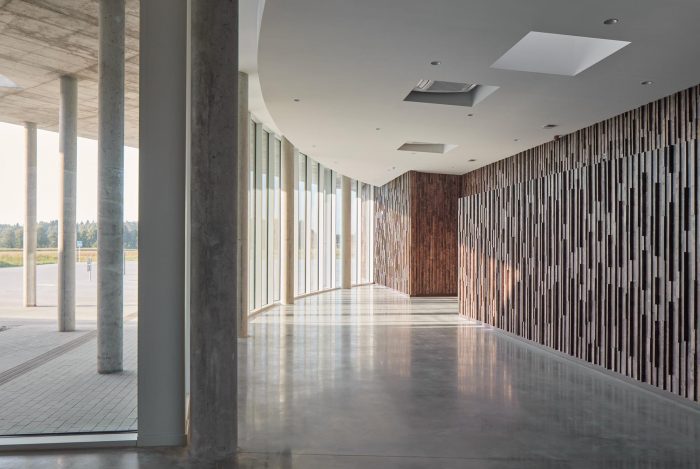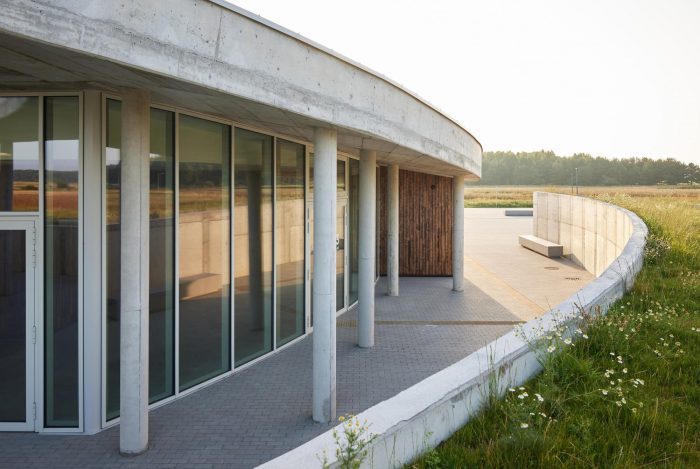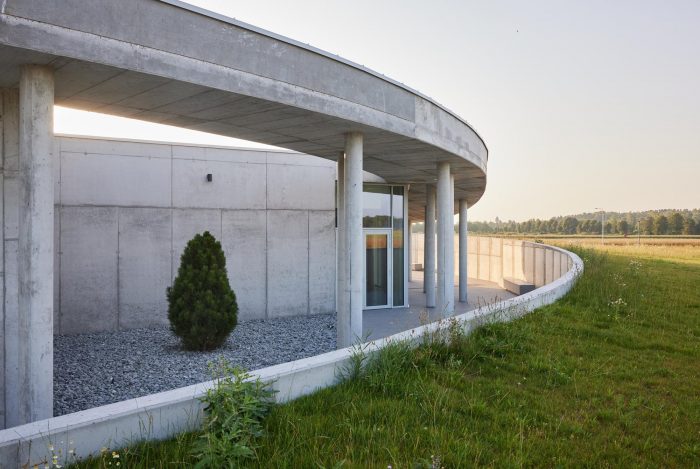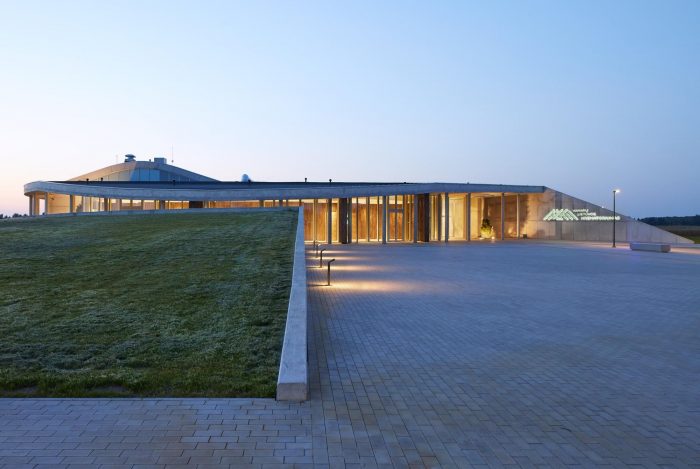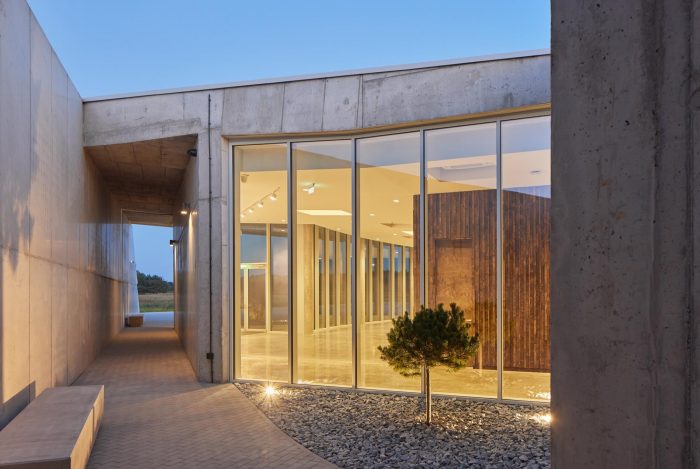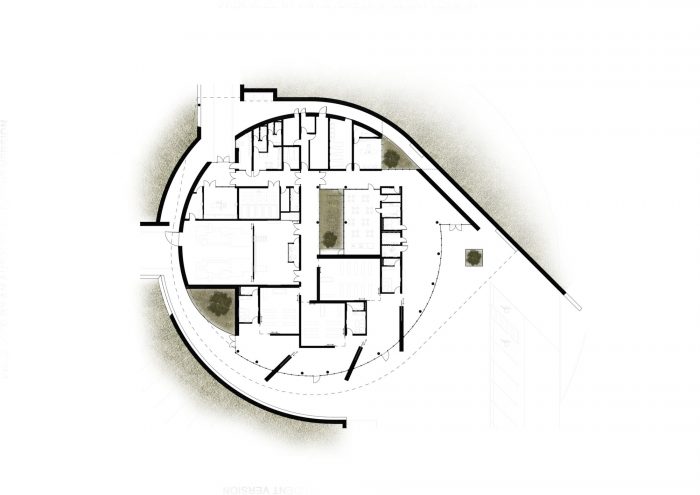火葬场位于一个平坦的表面–在森林边的田野上。设计的质量概念是一个相当敏感的方式–它代表了一个从表面上升的浅丘。火葬场的设计隐喻着一个覆盖着白色亚麻布的坟丘。建筑的体积和它的通道空间被周围景观的堤坝分开。屋顶的结构让人联想到覆盖建筑体量的仪式性空白,并使其与周围的地面相适应。火葬场建筑从一个遥远的角度可见,并成为仪式的中心。它平静地邀请并释放那些到来的人。它是一个情感释放的地方,也是一个服从于永恒的时间和永恒的体验的安静转变。
The crematorium is located on a flat surface – in a field by the forest. The mass concept of the design is a rather sensitive manner – it represents a shallow hill rising from the surface. The crematorium is designed with a metaphor of a burial mound covered with white linen. The volume of the building and its access spaces are separated by embankments of the surrounding landscape. The structure of the roof is reminiscent of a ritual blank that covers architectural volume and tailors it into the surrounding ground. The crematorium building is visible from a distant perspective and becomes the epicenter of the ritual. It calmly invites and releases those who arrive. It is a place of emotional discharge and a quiet transformation subordinate to the eternal time and the experience of eternity.
最终设计的价值和原则是基于四个基本规定。
一个概念隐喻,决定了对形状和计划结构的寻求。
空间–具有不同性质和仪式感的空间形成与局部庇护所的规定。
过程性,将与空间在几个基本方向外形成一个圆圈联系起来。按照仪式的步骤,从一个房间移动到另一个房间。
材料–长期的混凝土。随着老化的过程,永恒的时间的隐喻和现代废墟的内涵将在外表面(又称立面)上得到表达。
The values and principles of the final design were based on four basic provisions:
A concept metaphor that determined the search for shape and plan structure.
Space – of a different nature and ritual provision of space formation with localized shelters.
Processivity that would be tied with space in several essential directions outside forming a circle. Moving from one room to another following the steps of a ritual.
Material – long-term concrete. With the process of aging, the metaphor of the eternal time and the connotation of modern ruins would be expressed on the outer surface aka façade.
内部空间的设计试图为访客提供一个舒适的氛围。专门用于沉思和娱乐的空间是必要的。记忆仪式建筑的形式可以为体验生命的一个阶段创造一个安全的情感环境,这不仅在立陶宛有意义。这种建筑的共同特点是专门用于精神和情感治疗的空间。因此,内院系统被设计并交织在建筑结构中,连接了内部和外部空间。所选择的材料–木板–覆盖在室内墙壁上,也是为了创造一种更舒适的感觉。
Interior spaces are designed trying to provide a cozy and comforting atmosphere for the visitor. Spaces dedicated to contemplation and recreation are necessary. The form of the memory ritual architecture that could create a safe emotional environment for experiencing one of the stages of life is relevant not only in Lithuania. The common feature of such architecture is spaces dedicated to spiritual and emotional healing. As a result, the inner yards system is designed and intertwined into the building structure, connecting inside and outside spaces. Chosen material – timber planks – covers the interior walls also chosen to create a cozier feeling.
场地开发的下一步是骨灰盒公园,由16个不同的室内场所和几个开放空间组成,有不同的地标、艺术腔调和沉思的空间。从火葬场建筑–场地的震中和仪式的开始–火葬场将是一个最后的神圣仪式。骨灰龛公园中的每一个微型空间都是以这样一种方式创造的,它可以被识别,并与其他地方以及外部世界的喧嚣和日常生活的速度区分开来。为平静的体验留出空间。
The next step for the site development is the columbarium park, consisting of sixteen different indoor premises and several open spaces with different landmarks, artistic accents, and spaces for contemplation. From the crematorium building – an epicenter of the site and a start of the ritual – crematorium would be a last sacramental. Each of the micro-spaces in the columbarium park is created in such a way that it is recognizable and differentiated from the rest as well as the fuss of the outside world and the speed of everyday life. Allowing space for a calming experience.
Architects: AEXN Architects
Area : 311 m²
Year : 2022
Photographs :Norbert Tukaj
Architects : Tomas Grunskis, Jurate Kinduryte
City : Klaipėda
Country : Lithuania

